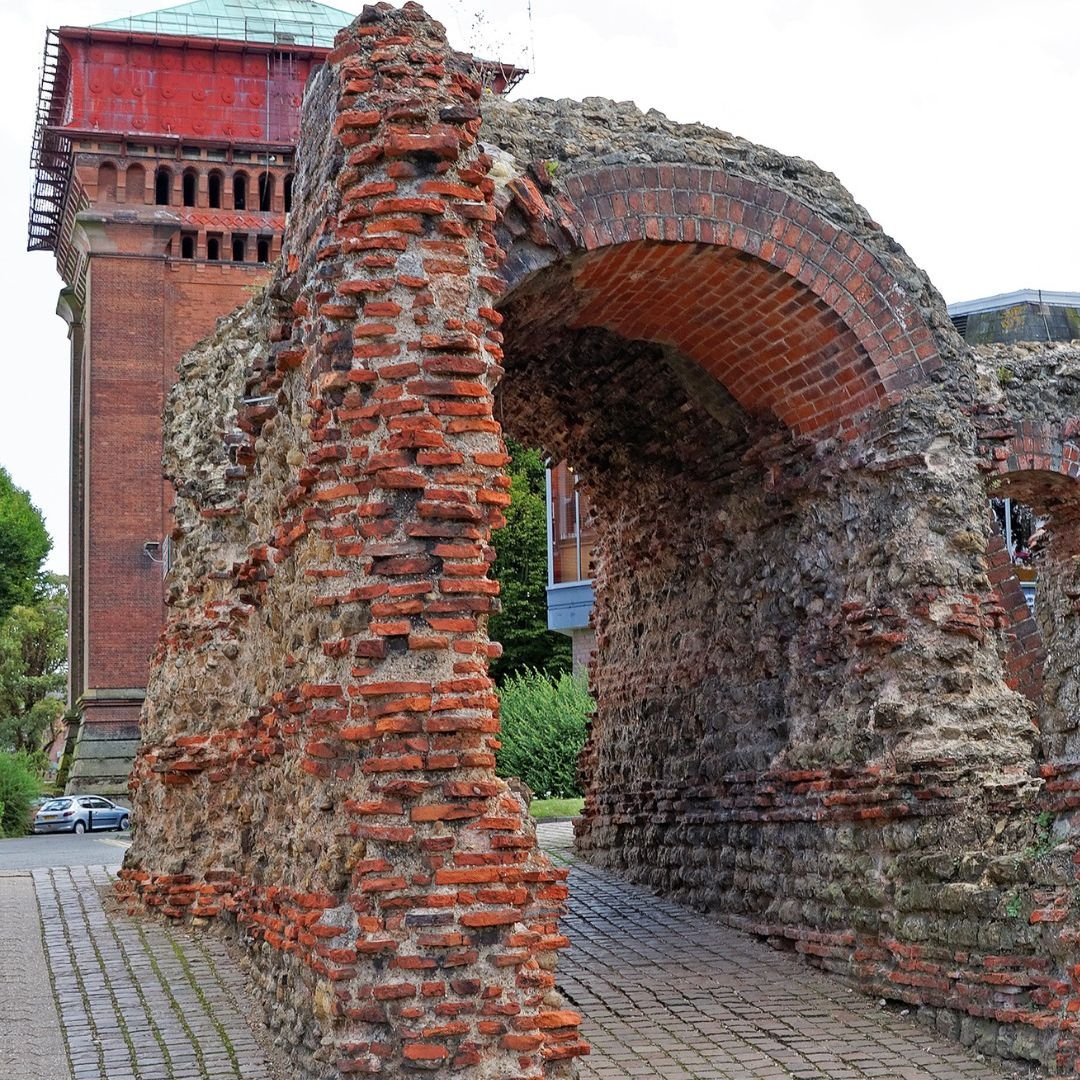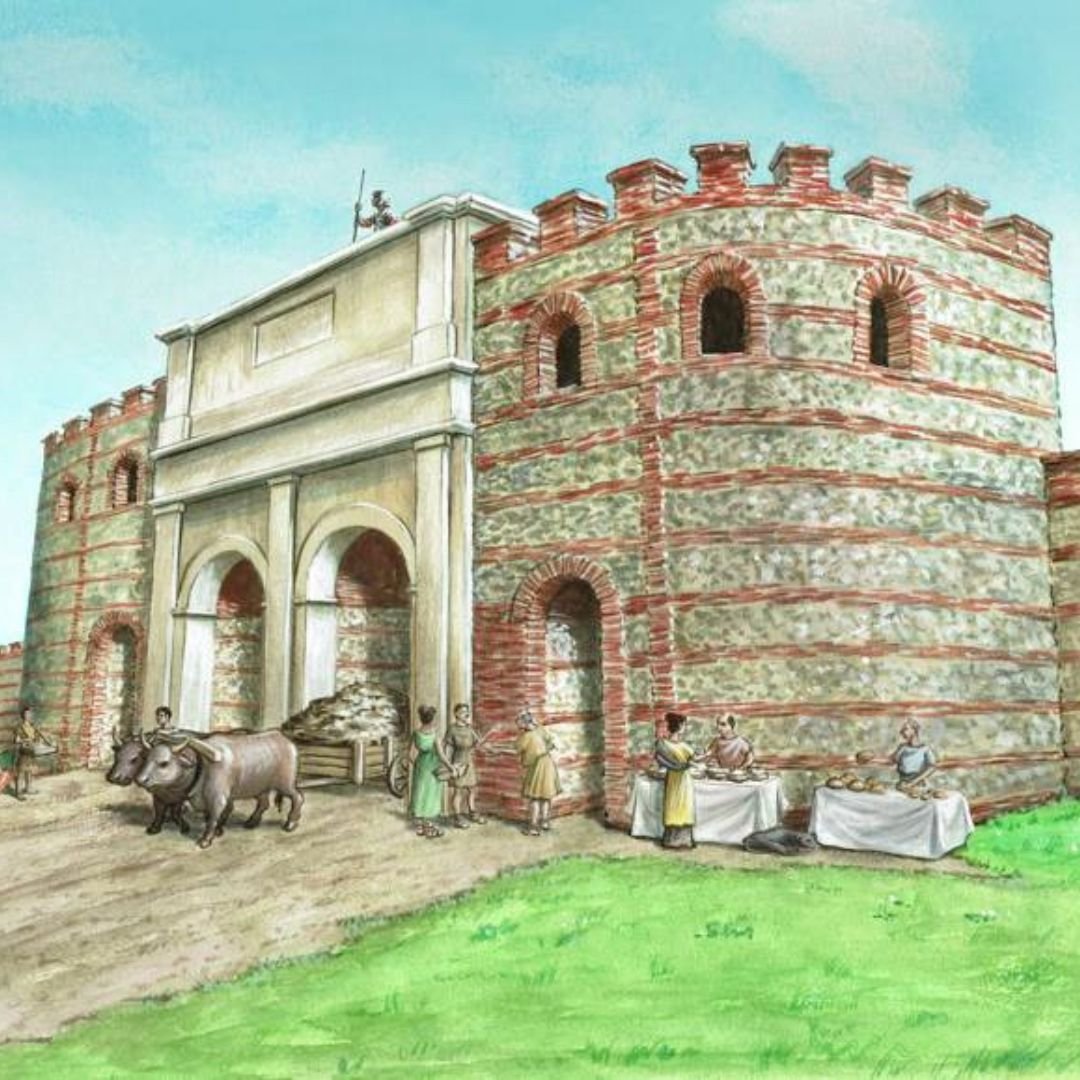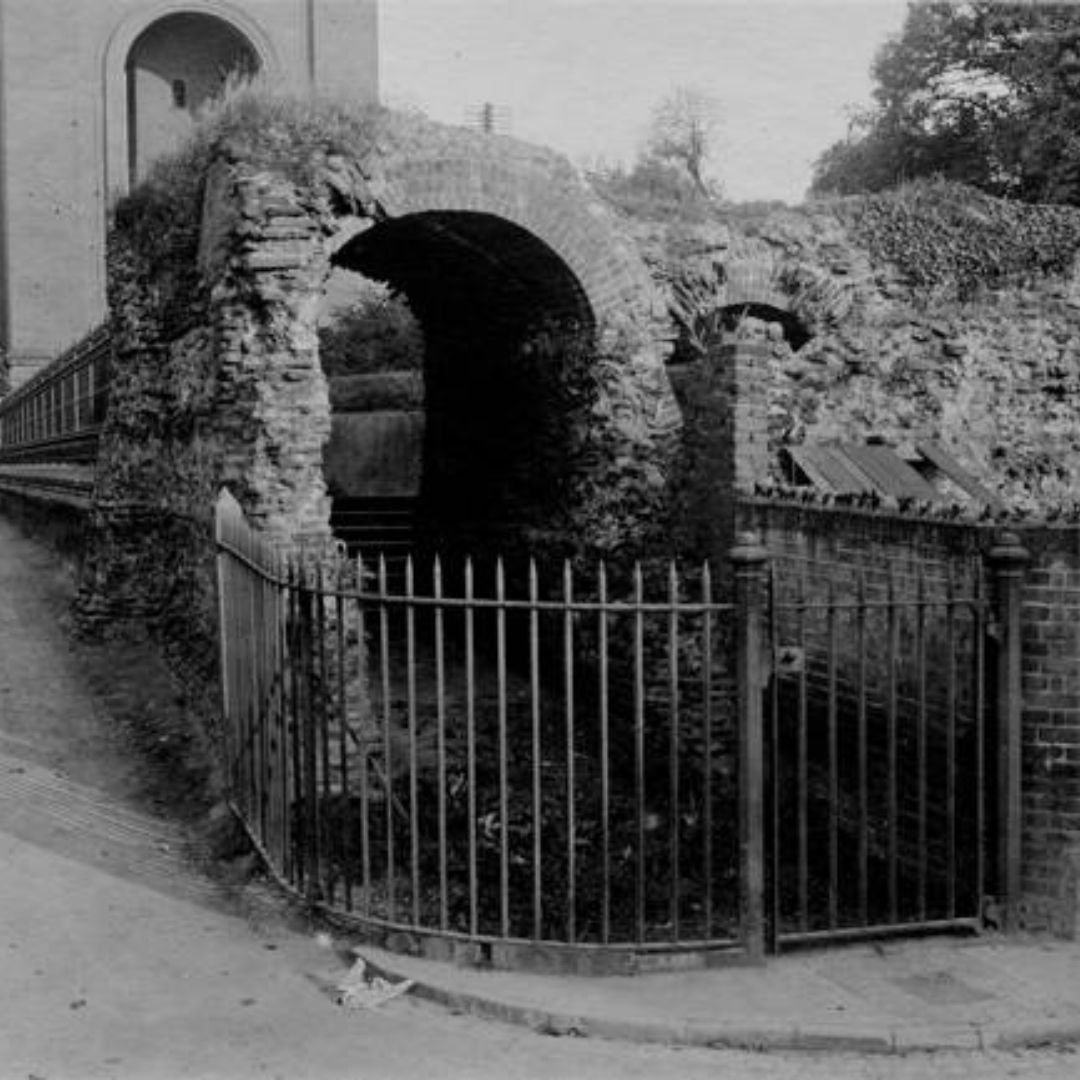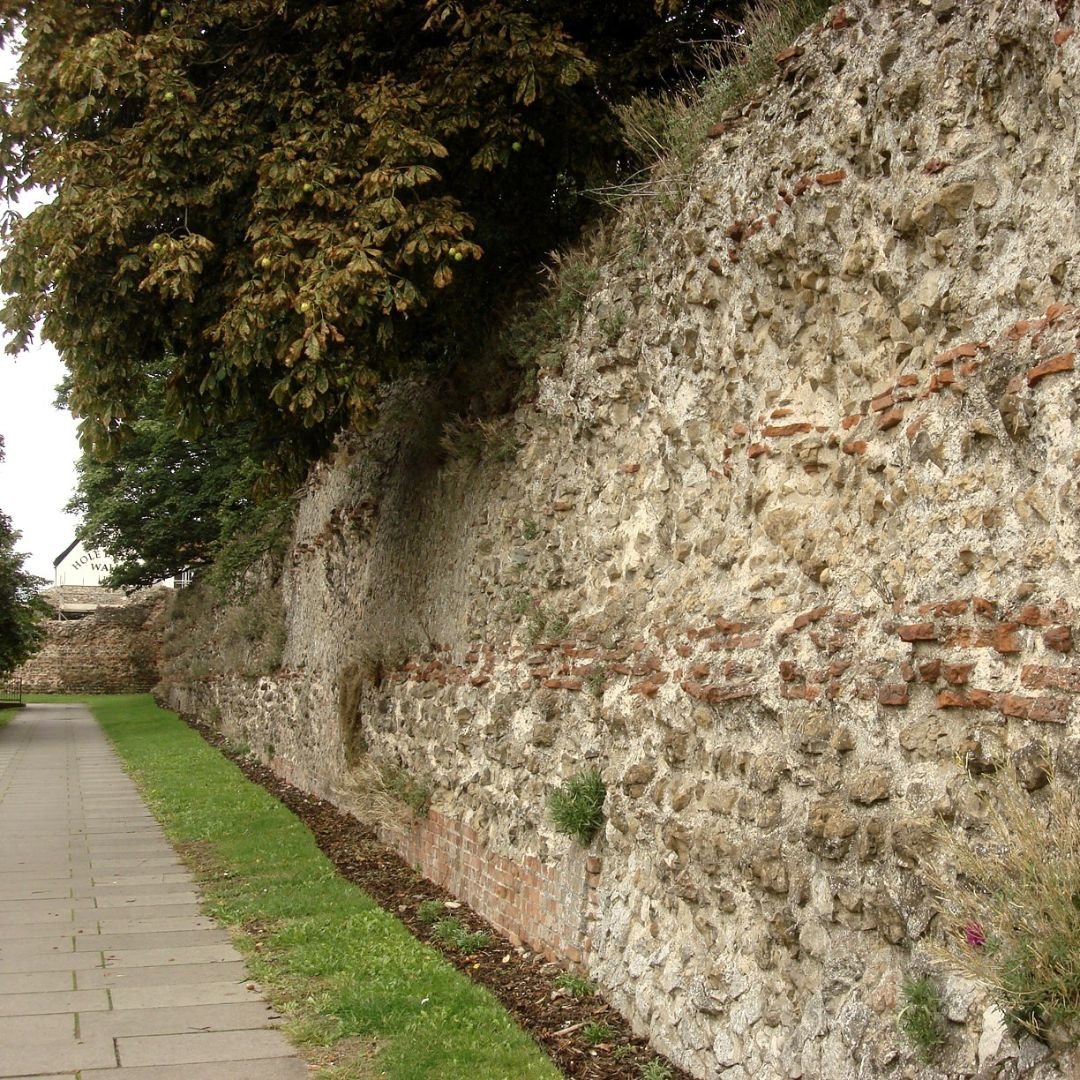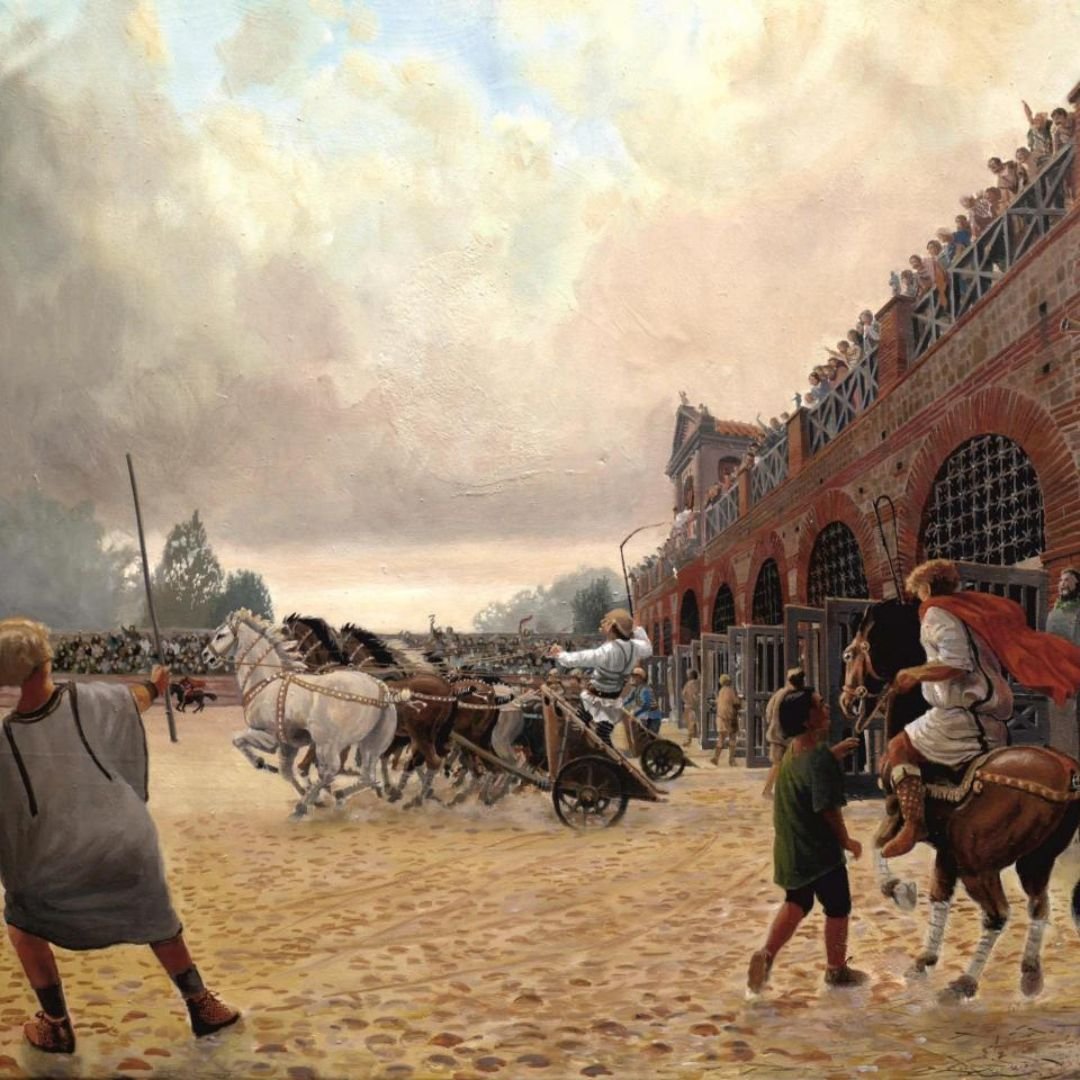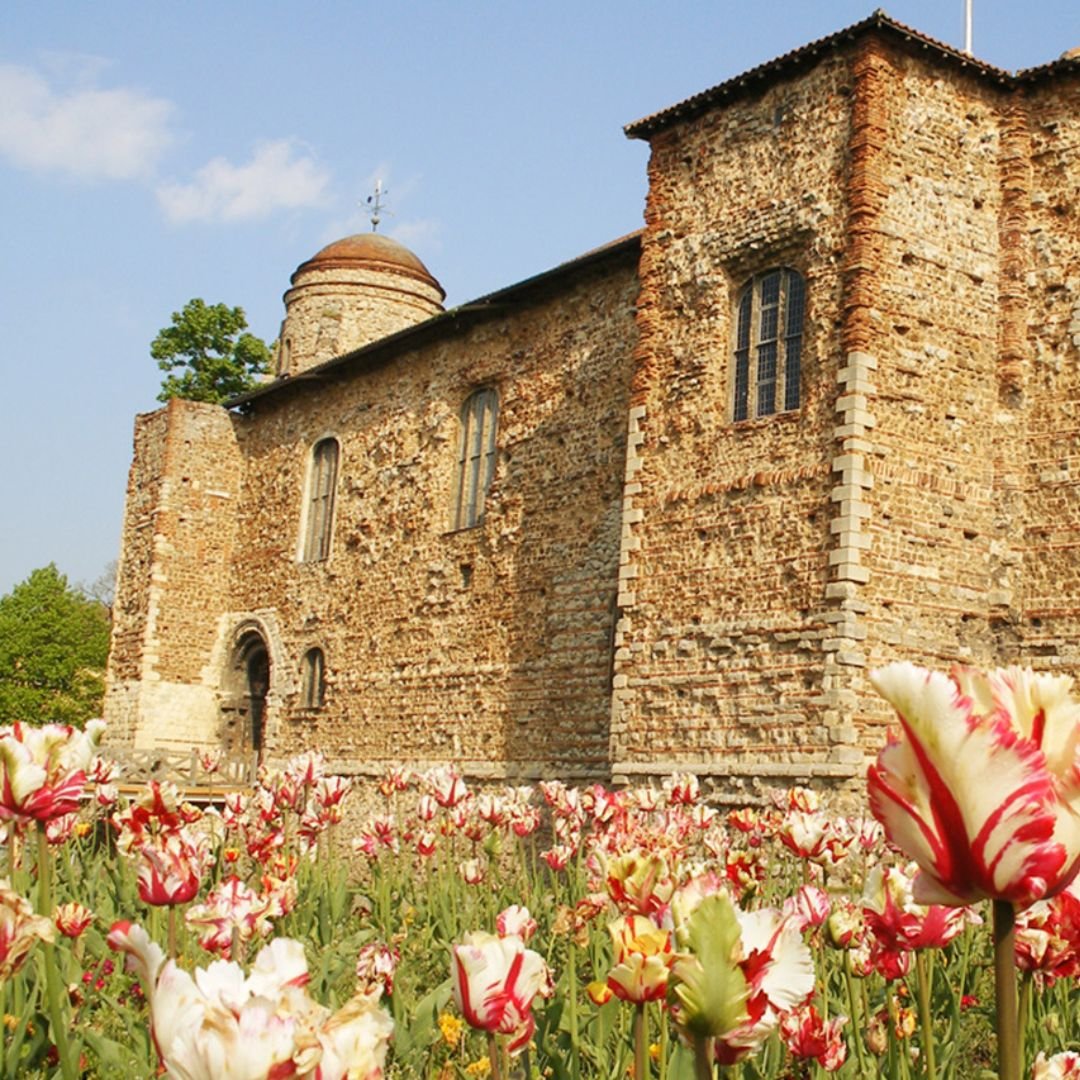Balkerne Gate, Colchester: Oldest Roman Gateway In Britain
Balkerne Gate is a Roman gateway in Colchester and is the largest surviving gateway in Roman Britain.
The Balkerne Gate was the main (west) gate into the walled Roman town and one of six gates around the circuit of the town wall.
Colchester is said to be the oldest recorded town in Britain.
It is said that within the town area it is possible to dig and find Roman artefacts almost anywhere.
The iconic Balkerne Gate incorporated an existing free-standing monumental arch (with two archways) built to celebrate the Claudian conquest of Britain, probably in the AD 50s.
This created a double-arched gateway with flanking walkway arches and external guardrooms, 30m wide N to S, as shown in the reconstruction drawing below by Peter Gray.
The archways formed the main carriageways with the addition of a footway and a bastion on both sides to form the Balkerne Gate.
The surviving (southern) pedestrian archway of the Balkerne Gate, still in use today, and southern bastion (and also part of the northern bastion) is only a small part of what was once an impressive entrance into Colchester.
The base of the blocked carriageways are visible below the parapet of the Hole in the Wall public house.
The Balkerne Gate is now a scheduled monument and a Grade I listed structure.
Colchester also has the earliest, best preserved and one of the longest Roman town walls in Britain.
Following the rebuilding of the town after 60/1, new walls and a large defensive ditch were built around the colonia (the first town walls in Britain, predating other such walls in the province by at least 150 years).
They were completed by 80, twenty years after the revolt.
They were built with two external faces of alternating layers of tile and septoria mudstone containing a core of septaria boulders, with a 10 ft wide and 4 ft deep foundation trench.
They were 2,800m long and 2.4m thick, and survive up to a height of over 6m in the 21st Century.
Later, in around 175–200, a large earth bank was built up against the inner face of the walls - the walls had between 12 and 24 towers and six large gates.
The Balkerne Gate , in the centre of the Western section of the walls, was the main gate out of the town.
It has a large fortified barbican that still stands as Britain's largest Roman gateway, which incorporated the earlier monumental arch built before the Iceni rebellion and was flanked by two possible temples.
Skulls showing signs of decapitation were found in the town ditch in front of the gate, interpreted as executions on public display.
The North wall contained two gates, the modern North Gate and Duncan's Gate.
The East wall had the modern East Gate, and the Southern wall had the modern South Gate and Head Gate.
Drains were constructed in the wall to allow sewerage out of the colonia.
Today, the Roman Wall can be walked around and is best seen in Castle Park and at the top of Balkerne Hill near the Hole in the Wall public house.
As the stronghold of a major tribe in the south-east, Colchester (previously called Camulodunum) held strategic importance.
A Roman legionary fortress, the first permanent legionary fortress to be built in Britain, was established within the confines of Camulodunon.
The legionary fortress was larger than a standard castrum, and included a large annex on its north-east side.
It was protected by a large palisaded ditch and wall (Roman military Vallum and Fossa), along with new earthwork ditch and rampart defences, built to supplement the existing native defences.
One of these was around the Sheepen site, which became the main Roman port for the fortress and later for the town, with another military river port at Fingringhoe.
Archaeological excavations in 2008–2009 revealed that the Roman Sheepen site was more extensive than previously thought.
It had a network of gravelled roads and timber-buildings, some of which contained timber-lined basements.
The interior of the fortress consisted of long barrack blocks able to hold groups of eighty soldiers, known as a Century, with a large room for a centurion at one end of each block.
Roman military equipment and weapons have been found from the fortress, including swords, armour and harness fittings.
After the legion was withdrawn in c. AD 49, the legionary defences were dismantled and the fortress converted into a town, with many of the barrack blocks converted into housing.
Today, if you visit Colchester Castle, you can learn more about this town’s fascinating history.
Writing on TripAdvisor, one recent visitor said: “Great little museum in the castle, with some very interesting Roman exhibits and well written explanation labels. The interactive exhibits were very loud and distracting.
”The real highlight though was the castle tour which was exceptionally good value.”
If you enjoyed this blog post, please follow Exploring GB on Facebook for daily travel content and inspiration.
Don’t forget to check out our latest blog posts below!
Thank you for visiting Exploring GB.

